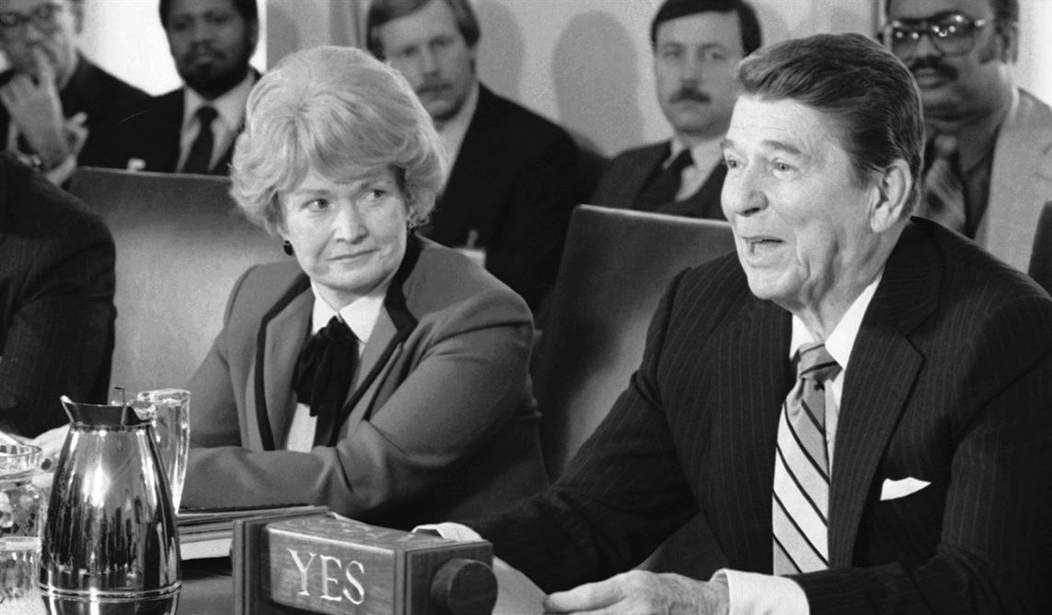Perhaps what we need these days is a bit of the daring and bravado America mustered at the height of the Cold War in the early days of the Reagan administration. Back then, computers were emerging as a key battleground. And we used our superior computer expertise to put the Russkies on the back foot while they simultaneously hoisted themselves by their own petard. And the result was the largest non-nuclear explosion in history, on Soviet soil, destroying part of the world’s biggest natural gas pipeline.
Back then, one of the top national security priorities of our Cold Warrior-in-Chief was to stop the construction of the Druzhba (“Friendship”) pipeline, perhaps with keen foresight seeing that European dependence on Russian gas supplies would give the Kremlin immense political leverage. Reagan ultimately failed to stop the building of the pipeline, but his National Security Council and the CIA did manage to temporarily interrupt its operations.
How many times at work have you had this conversation with your colleagues? “Guys, tell NORAD that the massive explosion near the Urals their satellites picked up wasn’t a nuclear detonation or Soviet missile launch, it was just a computer prank I played on the KGB.” No, me neither. But Gus Weiss did get to tell his coworkers at the National Security Council exactly that one day in June 1982.
French intelligence had recruited a Soviet spy deep within the KGB’s Moscow Central, working in the section responsible for evaluating Western technology that had been legally acquired or illegally stolen from Western hi-tech companies. The Soviets had set up a special operation called Line X within the KGB Technology Directorate.
Hundreds of case officers were devoted to surreptitiously penetrate factories and laboratories as part of a massive illicit transfer of technology intended to bridge that gap. In one bit of classic industrial espionage, a Soviet agent wore shoes with adhesive soles in order to pick up metal samples from a production floor at Boeing.
Recommended
French intelligence came into possession of an exhaustive list of KGB technology thieves and their activities thanks to a disgruntled and embittered KGB officer, Lt. Colonel Vladimir Ippolitovich Vetrov. Vetrov had been posted to Paris and Montreal for several years, and developed a taste for bourgeois life. After a scandal in Canada, he was sent back to Moscow for good, with no prospects of travel or the foreign lifestyle he craved.
Back in Moscow he was nominated to be the assistant to the head of the Information and Analysis Department of Directorate T (Technology). For Vetrov, this represented a humiliating dead end job after having been a KGB operative abroad. And it was another in a long line of occasions where Vetrov was bitterly disappointed. Like all Soviet institutions, patronage and personal connections counted for more than talent and intelligence.
However, Vetrov’s new position gave him a unique opportunity to take revenge on the agency he believed had undervalued his contributions and belittled his abilities. His duties were to evaluate and synthesize technical intelligence reports that Line X was collecting worldwide. From his perch within the KGB bureaucracy, he knew the identities of the agency’s operatives, who their secret Western collaborators were, and what they were tasked with stealing.
One item near the top of the list was software to automatically run the massive natural gas pipeline that the Soviet Union was constructing. The Trans-Siberian Pipeline was one of the most ambitious engineering and technical feats ever undertaken by the Soviets. It was of unprecedented length and throughput, a 4500 km pipeline powered by 42 compressor stations pumping natural gas from Western Siberia all the way to Western Europe. And the hard currency revenues from selling natural gas to Europe were becoming increasingly vital to the regime’s survival.
The software was necessary to control the complex system of compressor valves, and storage facilities required to ship the gas for such long distances. The Soviets tried to buy the sophisticated control systems they needed legally, but the strict US regime controlling technology transfers thwarted them. So the KGB sent an operative to penetrate a Canadian software company that produced such SCADA (System Control and Data Analysis) programs to steal the necessary technology.
Their operative apparently had little difficulty purloining the goods. That was because the CIA “improved” the software before allowing it to be stolen. It was designed with a bug that permitted the pipeline’s computers and software to run properly for some decent interval of time, after which a “Trojan Horse” feature in the code was programmed to go haywire. Suddenly, to the surprise of the pipeline operators, the previously smooth running automated control system went out of control, resetting pump speeds and valve settings to produce pressures that the pipeline’s welds and joints were not designed to withstand. “The result was the most monumental non-nuclear explosion and fire ever seen from space.”
As Reagan and CIA Director Casey began to contemplate a “take-down” strategy for strangling the Soviet economy, Gus Weiss became a key player in developing the plan to undermine the adversary. His dedication to undermining the Soviet economy and military machine earned him the nickname “Dr. Strangeweiss” from his National Security Council colleagues.
Dr. Strangeweiss had more ideas for exploiting the Farewell Dossier and derailing the Soviet economy. “Improved” computer chips were designed for Line X to acquire, made to pass initial quality control inspection but to later sporadically fail. Flawed but outwardly convincing design ideas for aircraft and other military hardware were placed where the KGB could get their hands on them. The net result was that eventually the entire Soviet military-industrial complex had no idea what stolen Western technology was reliable and what was fatally defective.
In the meantime, Colonel Vetrov was falling apart at the seams. His chronic drinking became heavier. He was becoming deeply embittered about his relationship with his mistress Ludmila. Finally, one day in February 1983 he took Ludmila for a drive in his Lada after finishing work, and after stopping in a remote parking lot on the edges of Moscow, stabbed her repeatedly with a pick made for killing pigs that he had found at his countryside dacha. Vetrov was arrested, convicted of homicide, and sentenced to fifteen years in the gulag.
In 1983, the French expelled 47 Soviet agents, and eventually the KGB was able to trace the betrayal back to Vetrov. After extensive interrogations, Vetrov confessed, and he was sentenced to death by a military court. Vetrov was executed in a KGB prison basement with the traditional single bullet in the back of the head. And in the course of 1984 and 1985, the U.S. and its NATO allies rolled up the Line X operation, deporting hundreds of compromised KGB operatives.
Ronald Reagan later called it “the greatest spy story of the twentieth century.”

























Join the conversation as a VIP Member